Machine Learning By Andew Ng - Week 10
Gradient Descent with Large Datasets
Learning With Large Datasets
-
Machine Learning and Data
It’s not who has the best algorithm that wins. It’s who has the most data.
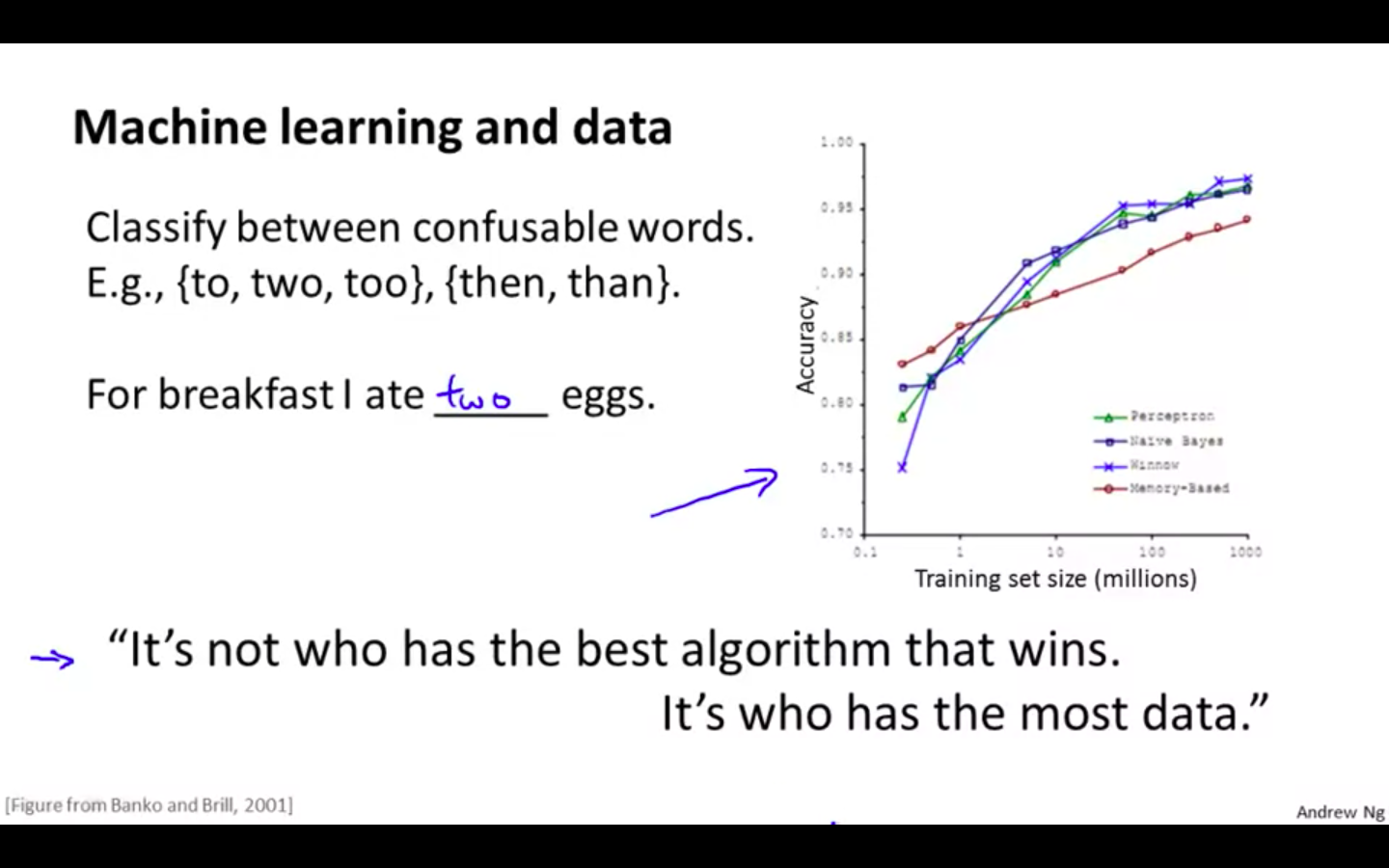
-
Learning With Large Datasets
-
First choose m = 1000 and train the algorithm
-
Plot the learning curve, if it has high variance then more data feeding will be helpful
-
If the learning curve is high bias then more data feeding will not be helpful
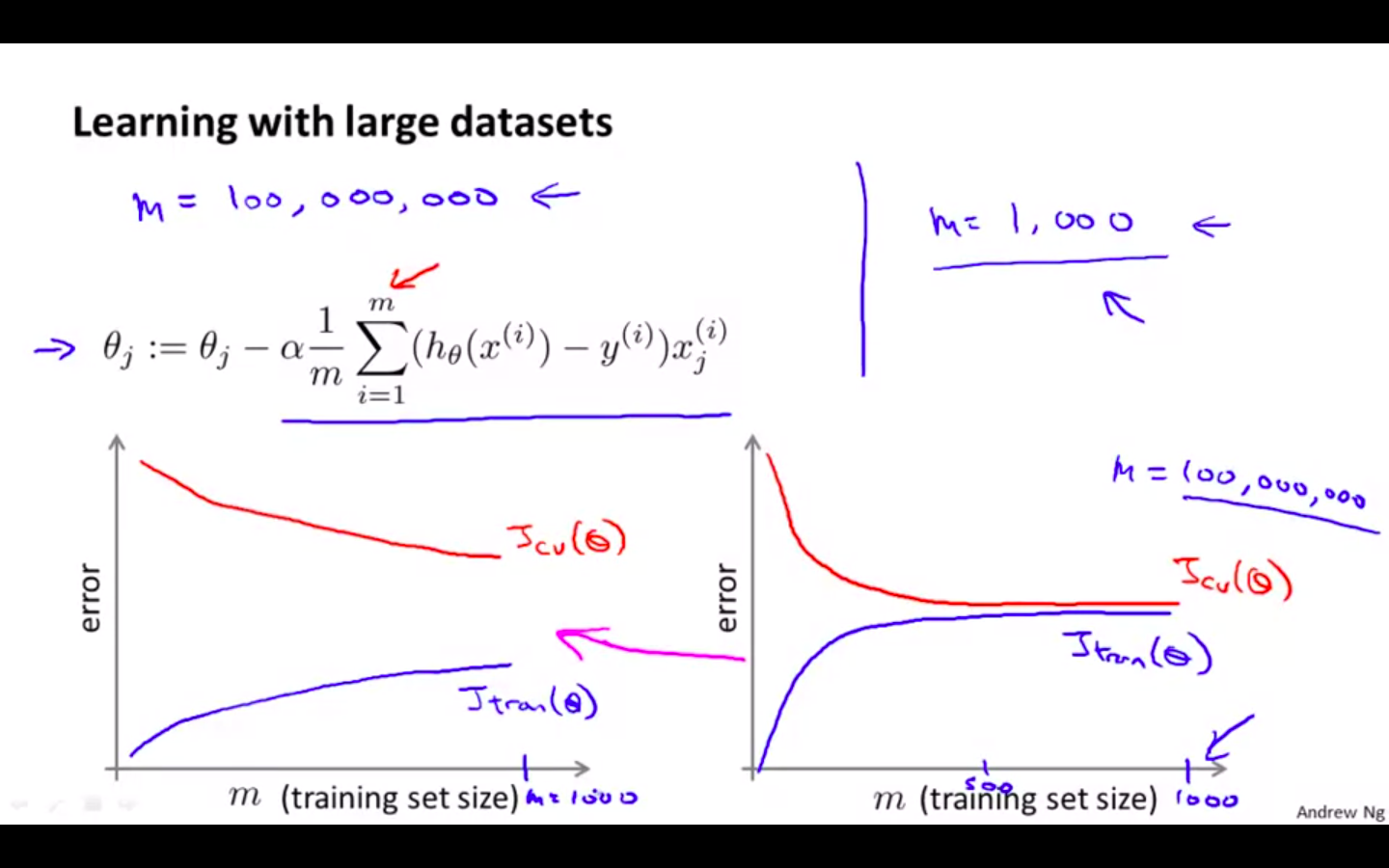
-
Stochastic Gradient Descent
-
Linear Regression with Gradient Descent
- Recap
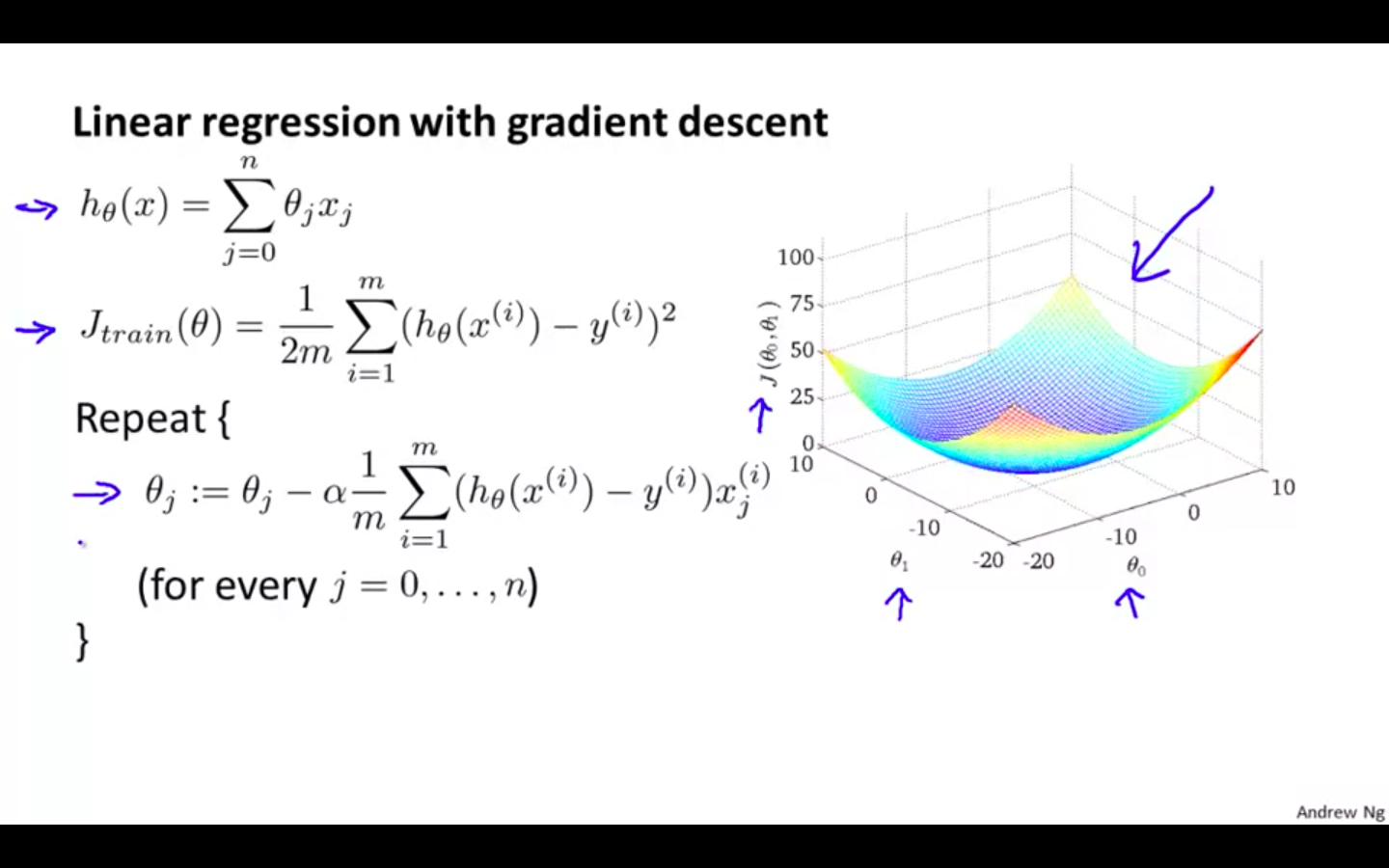
-
Previous from of gradient descent would iterate all the training examples and sum them to take one step of descent
-
This causes problem when the training data is way too large, in hundreds of millions, then it gets computationally expensive to use that gradient descent
-
That is also called as “ Batch Gradient Descent “, because it uses all the training data
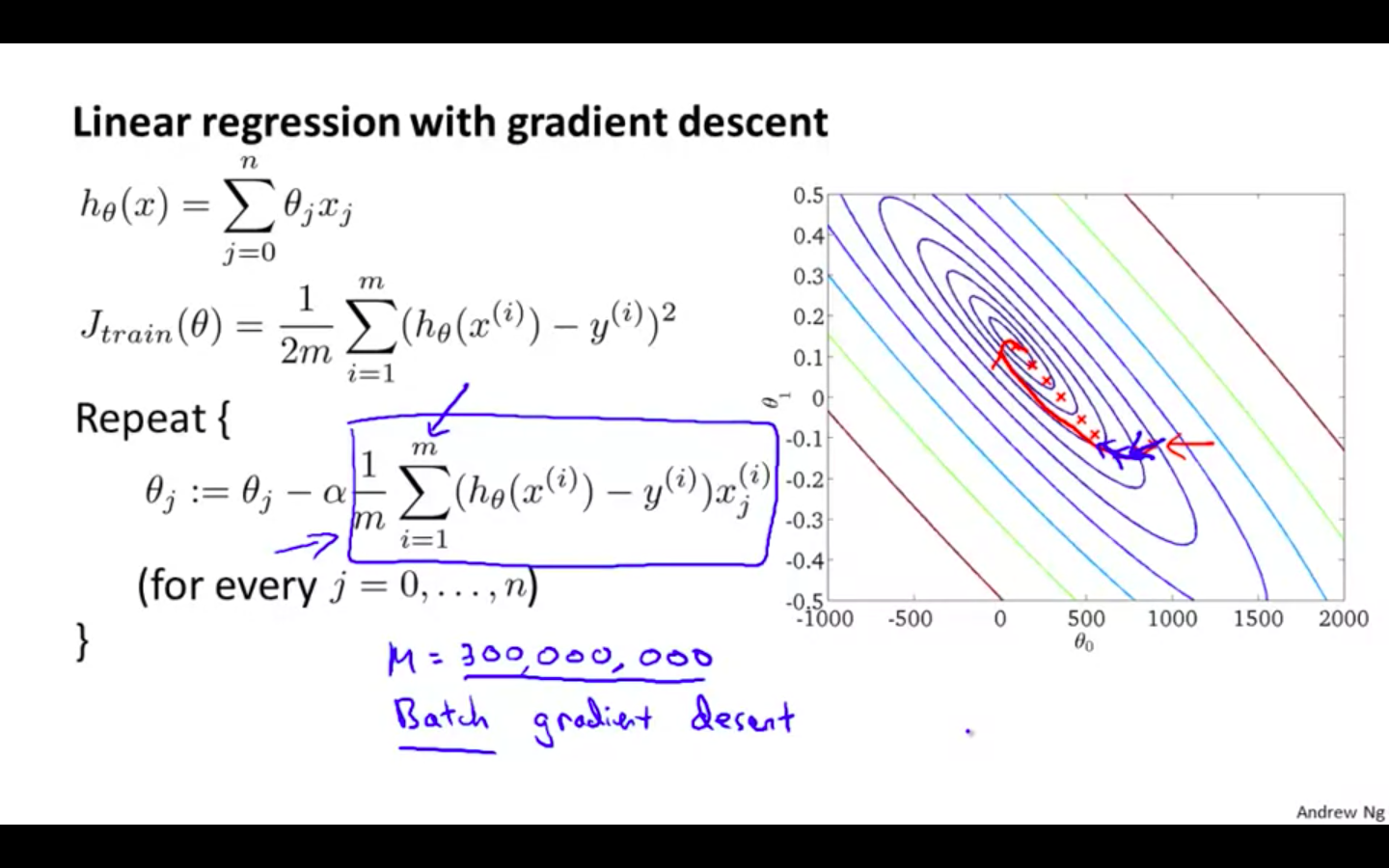
-
Batch Gradient Descent vs Stochastic Gradient Descent
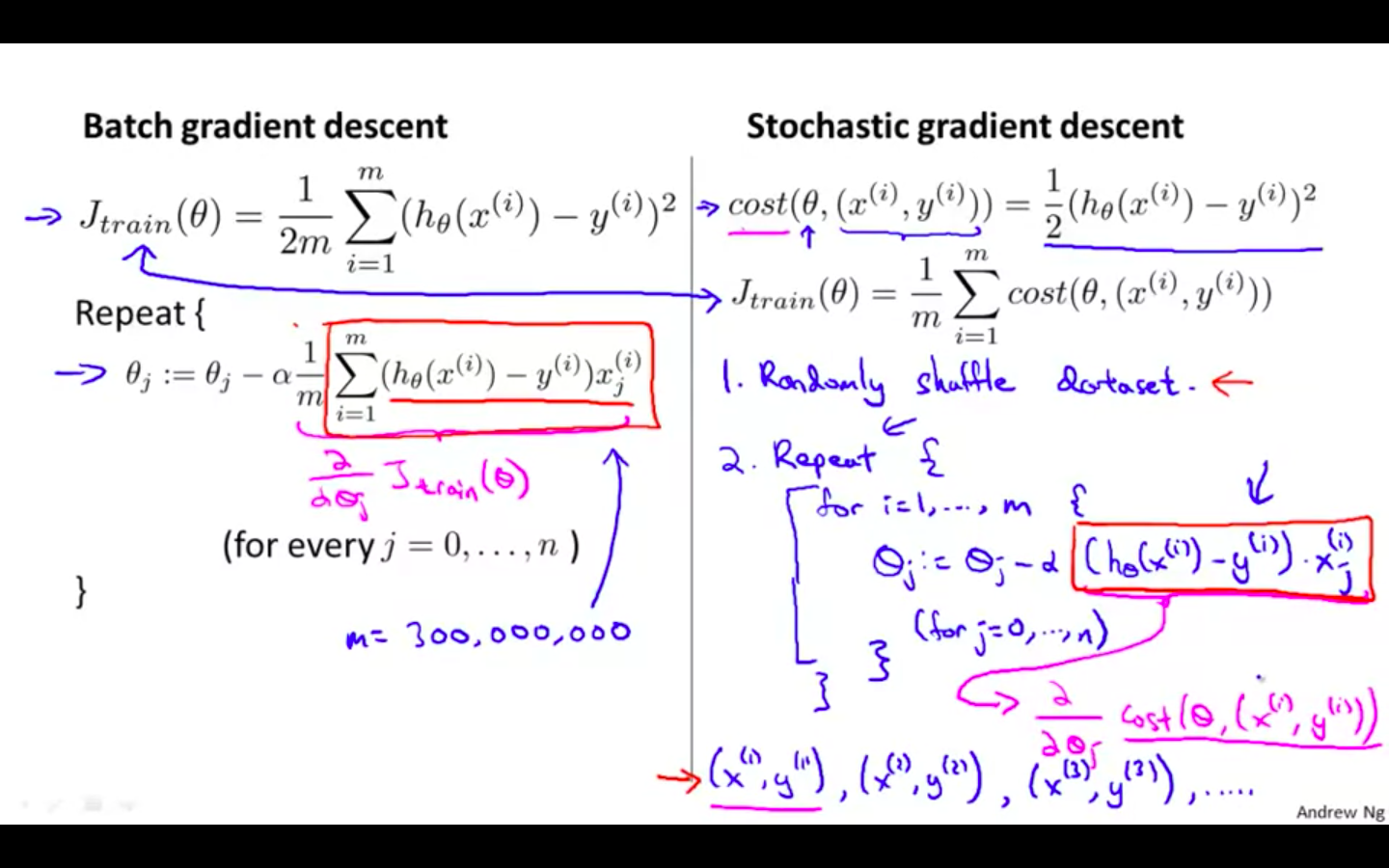
-
Stochastic Gradient Descent
-
Randomly shuffle the training data
-
Repeat the descent using one single example at a time
-
Descent will not converge like the batch gradient descent, it will get to the area of the global minimum which is good for the hypothesis
-
This will not converge directly to the global minimum
-
Steps are in variation to each other and in whole picture, it is moving towards the global minimum
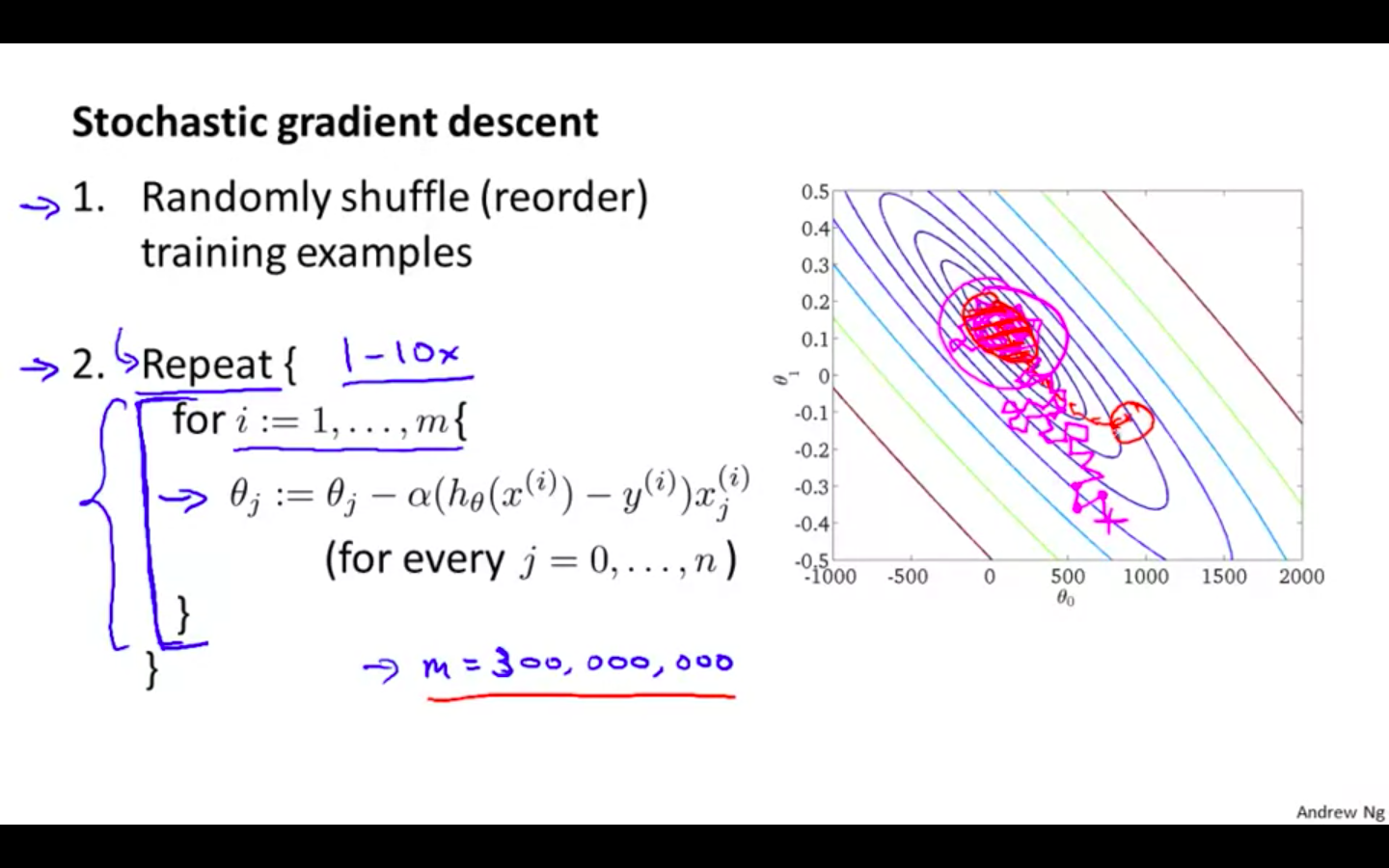
-
Mini-Batch Gradient Descent
-
Comparison between different gradient descent
-
Batch Gradient Descent ⇒ Use all m examples in each iteration
-
Stochastic Gradient Descent ⇒ Use 1 example in each iteration
-
Mini-batch Gradient Descent ⇒ Use b examples in each iteration

-
-
Mini-Batch Gradient Descent
-
Select a no. of examples for batch
-
Repeat the descent updates using the new batch
-
It is faster than the batch gradient descent
-
If vectorisation implemented efficiently it can be faster than the stochastic gradient descent, because of the parallelism used in operations
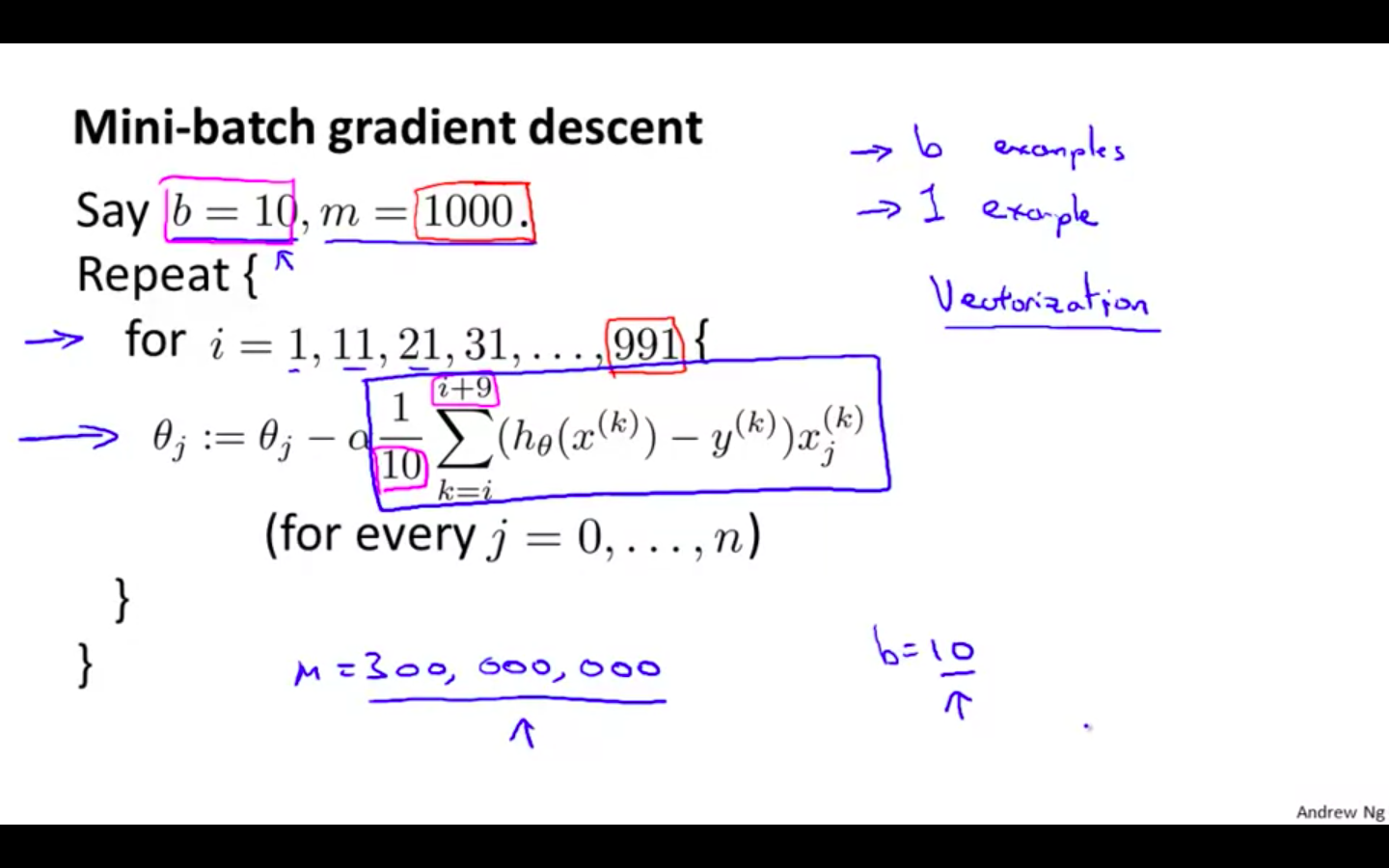
-
Stochastic Gradient Descent Convergence
-
Checking for Convergence
-
During learning compute cost function before updating parameter
-
Every 1000 iteration ( say ), plot cost function averaged over the last 1000 examples processed by algorithm

-
Examples
-
Using bigger number of training examples before ploting will give a smoother curve
-
If cost seems to increase increase, it means the algorithm has diverge.
- Using smaller learning rate will solve the problem
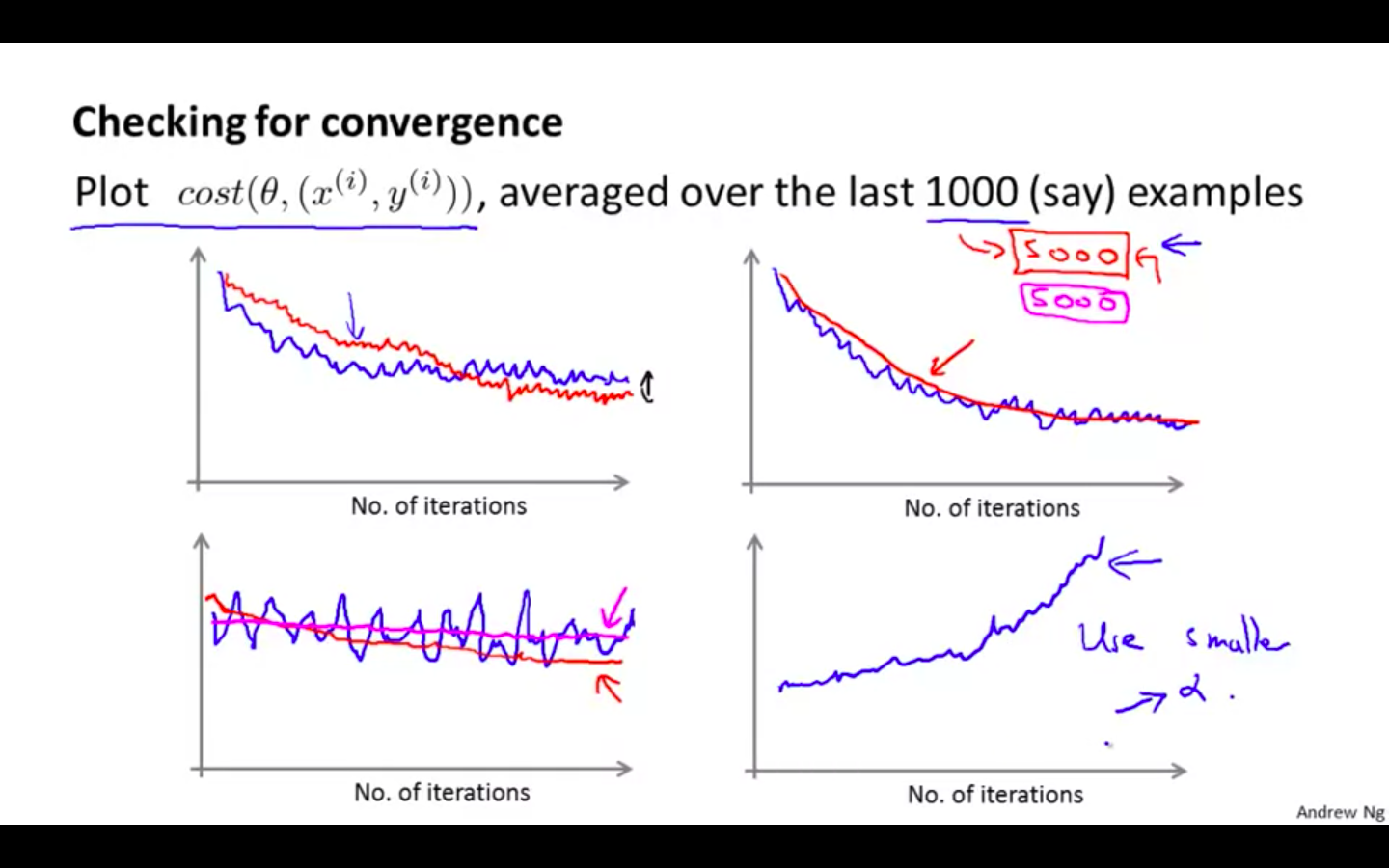
-
-
-
Tuning Learning Rate in Stochastic Gradient Descent
-
Learning rate alpha is typically held constant. Can slowly decrease alpha over time if we want theta to converge
- alpha = const1 / iterationNumber + const2
-
Dynamic selection of learning rate can result in convergence of the algorithm
-
Small learning rate will result in not oscillating around the global minimum and to converge
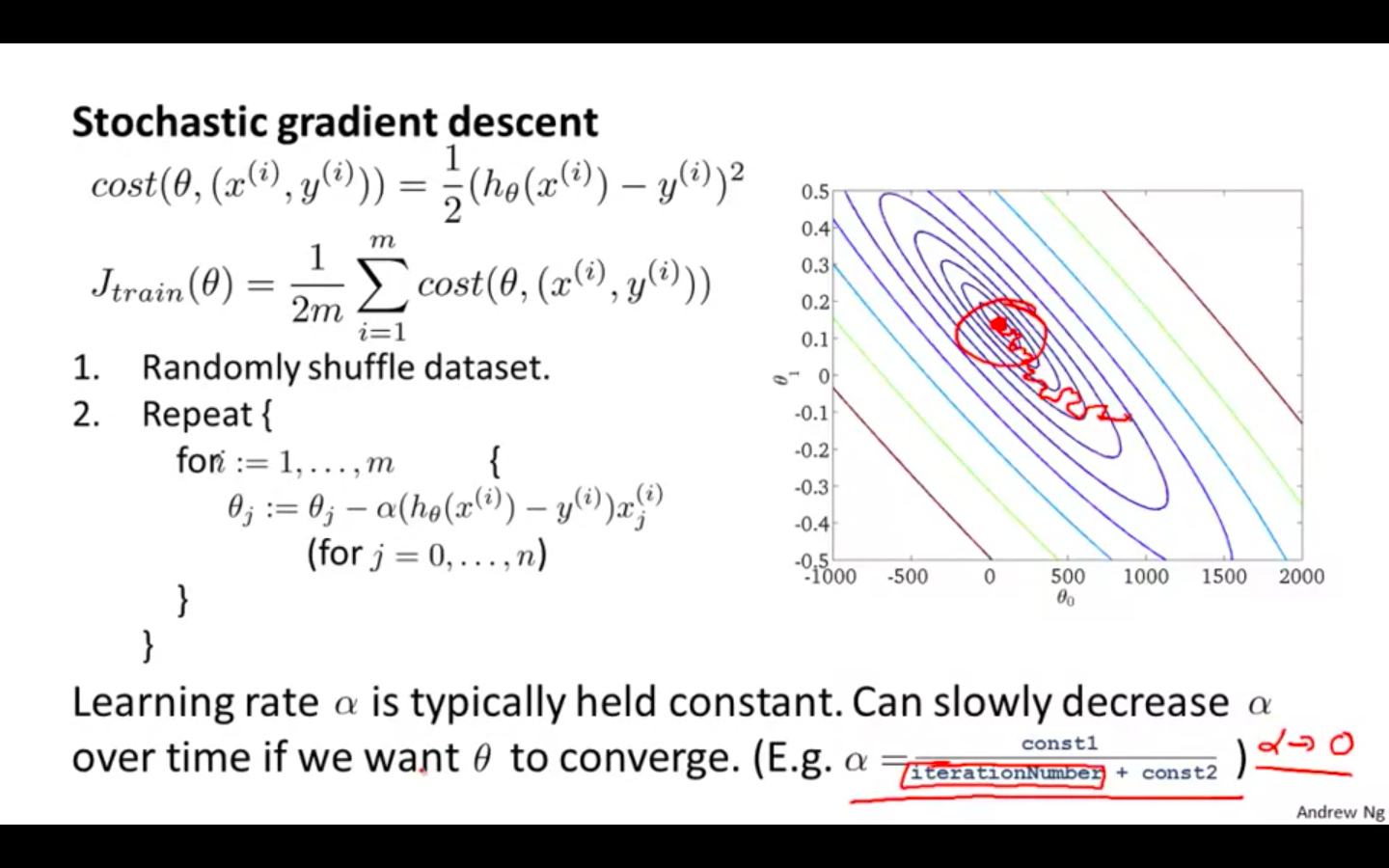
-
Advanced Topics
Online Learning
-
Online Learning
-
Shipping service website where user comes, specifies origin and destination, you offer to ship their package for some asking price, and users sometimes choose to use your shopping service ( y =1 ), sometimes not ( y = 0 )
-
Features x capture properties of user, of origin / destination and asking price.
-
We want to learn p ( y = 1 x ; theta ) to optimise price. -
In online learning, there is no fixed training data
-
There is continuous stream data flowing which is used to train once and then the data is discarded
- Online learning can adapt to changing user performance
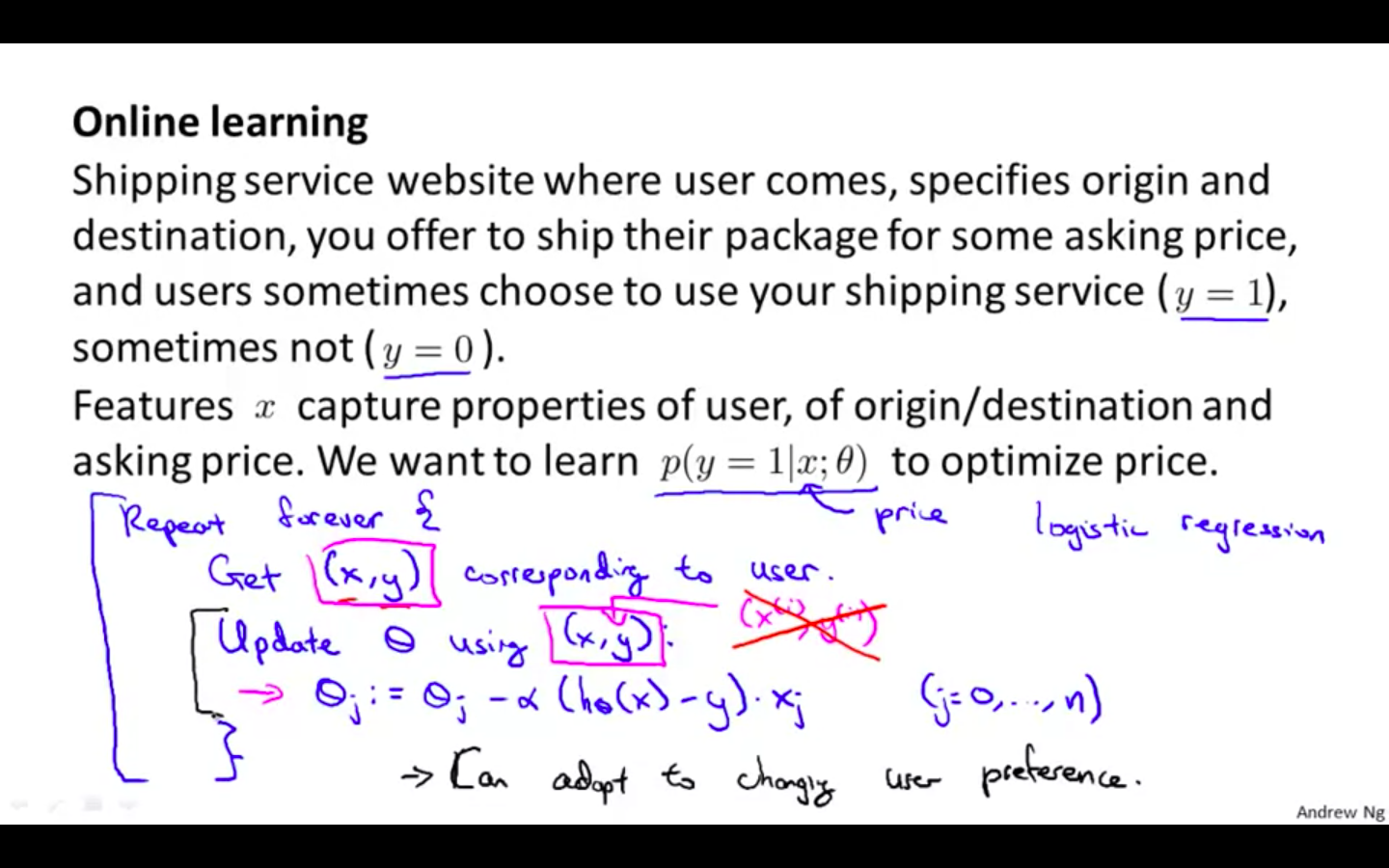
-
-
Examples
-
Product search ( learning to search )
-
User searches for “ Android phone 1080p camera “
-
Have 100 phones in store. Will return 10 results
-
x = features of phone, how many words in user query match name of phone, how many words in query match description of phone etc
-
y = 1 if user clicks on link. y = 0 otherwise
-
learn p ( y = 1 x ; theta ) - Use to show user the 10 phones they’re most likely to click on
-
-
Choosing special offers to show user
-
Customised selection of news articles
-
Product recommendation
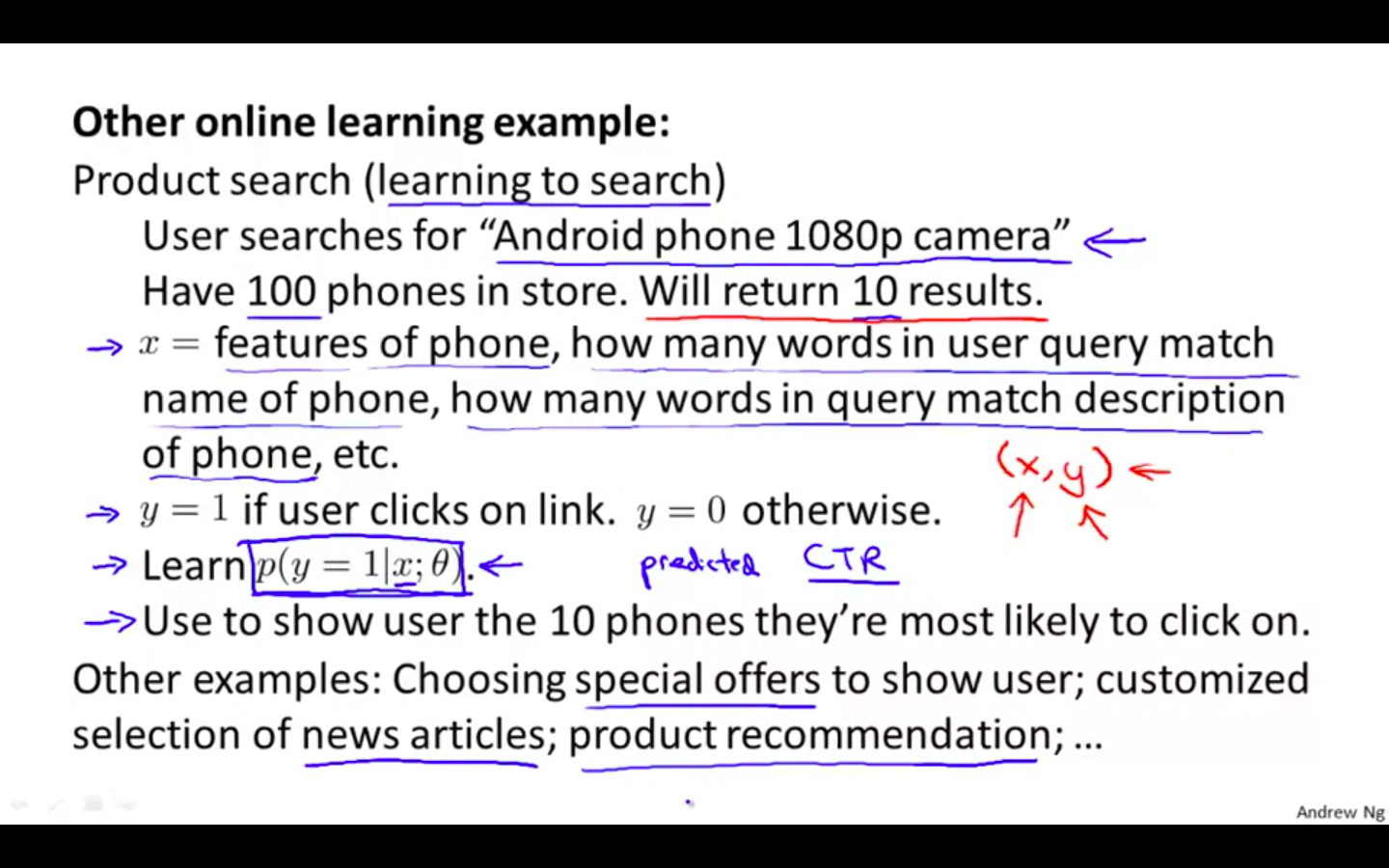
-
Map Reduce and Data Parallelism
-
Map Reduce
-
Dividing the training set into parts and computing them using different computers and then combining results from all computers
-
Network latency has to be considered
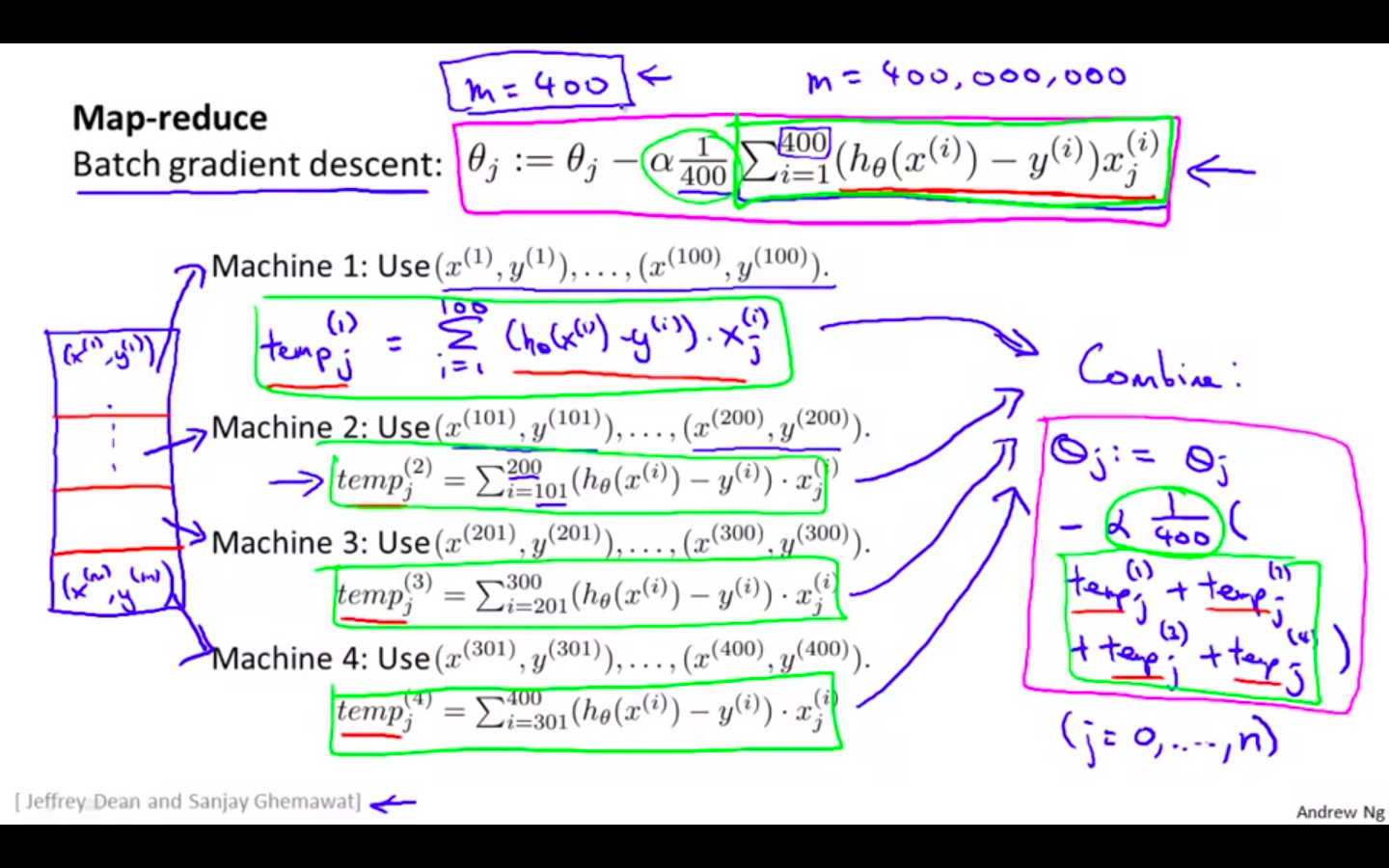
-
Concept
- Workflow of Map Reduce
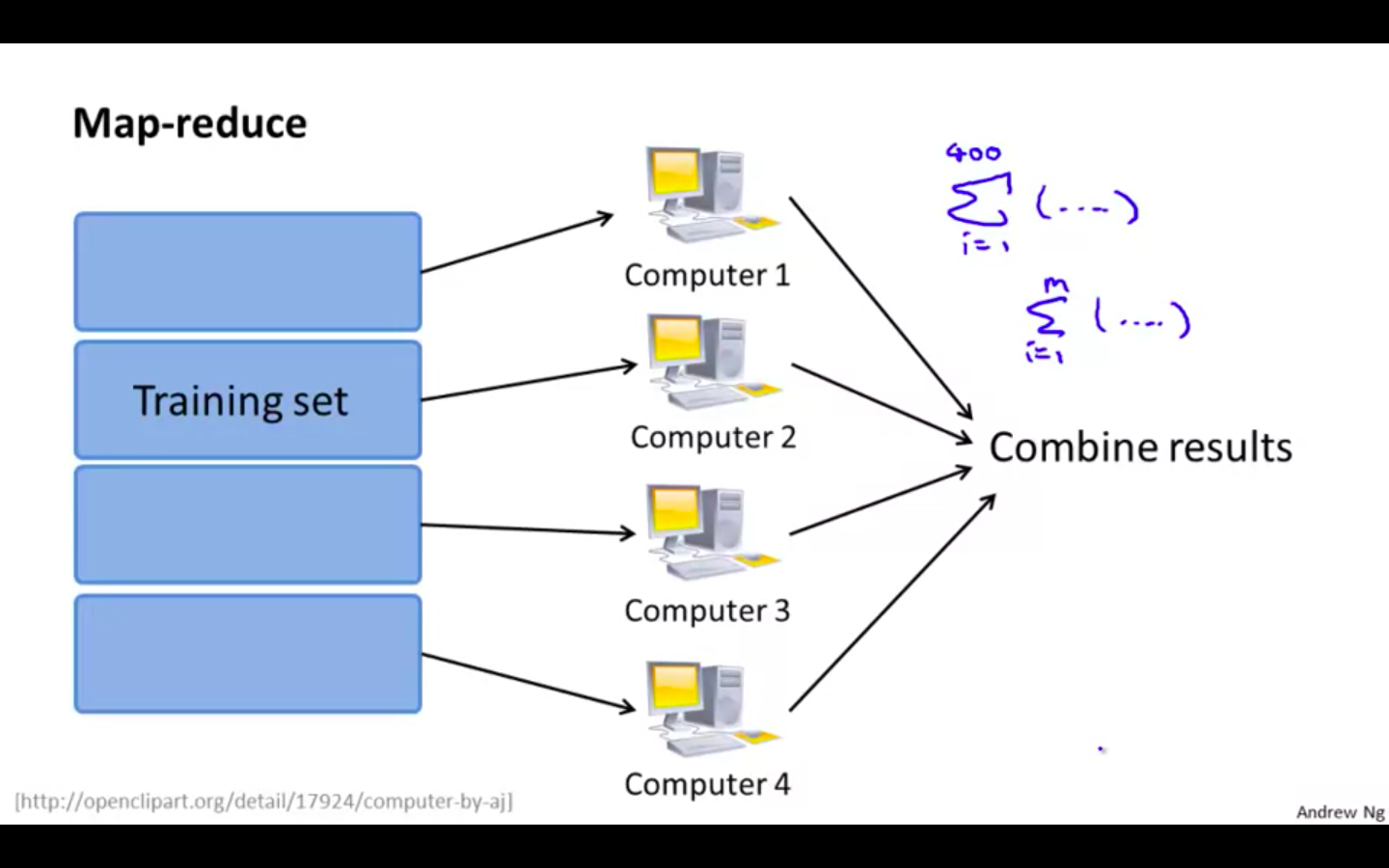
-
Map Reduce and summation over the training set
- Many learning algorithms can be expressed as computing sums of functions over the training set
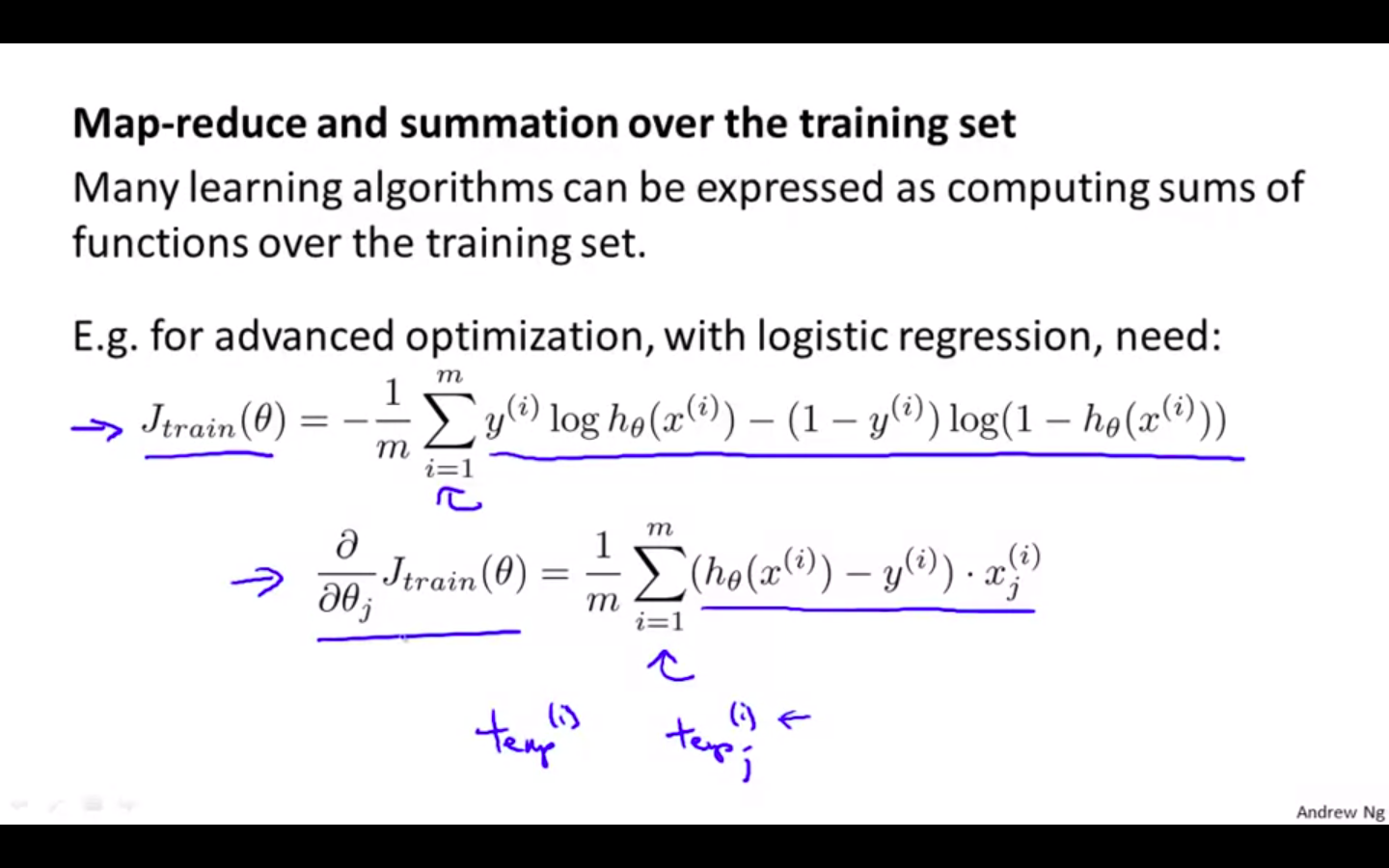
-
Multi Core Machines
-
It uses multiple cores in the machine to parallelise the operation
-
Factor of Network latency is diminished, because all the operations are performed in the same machine
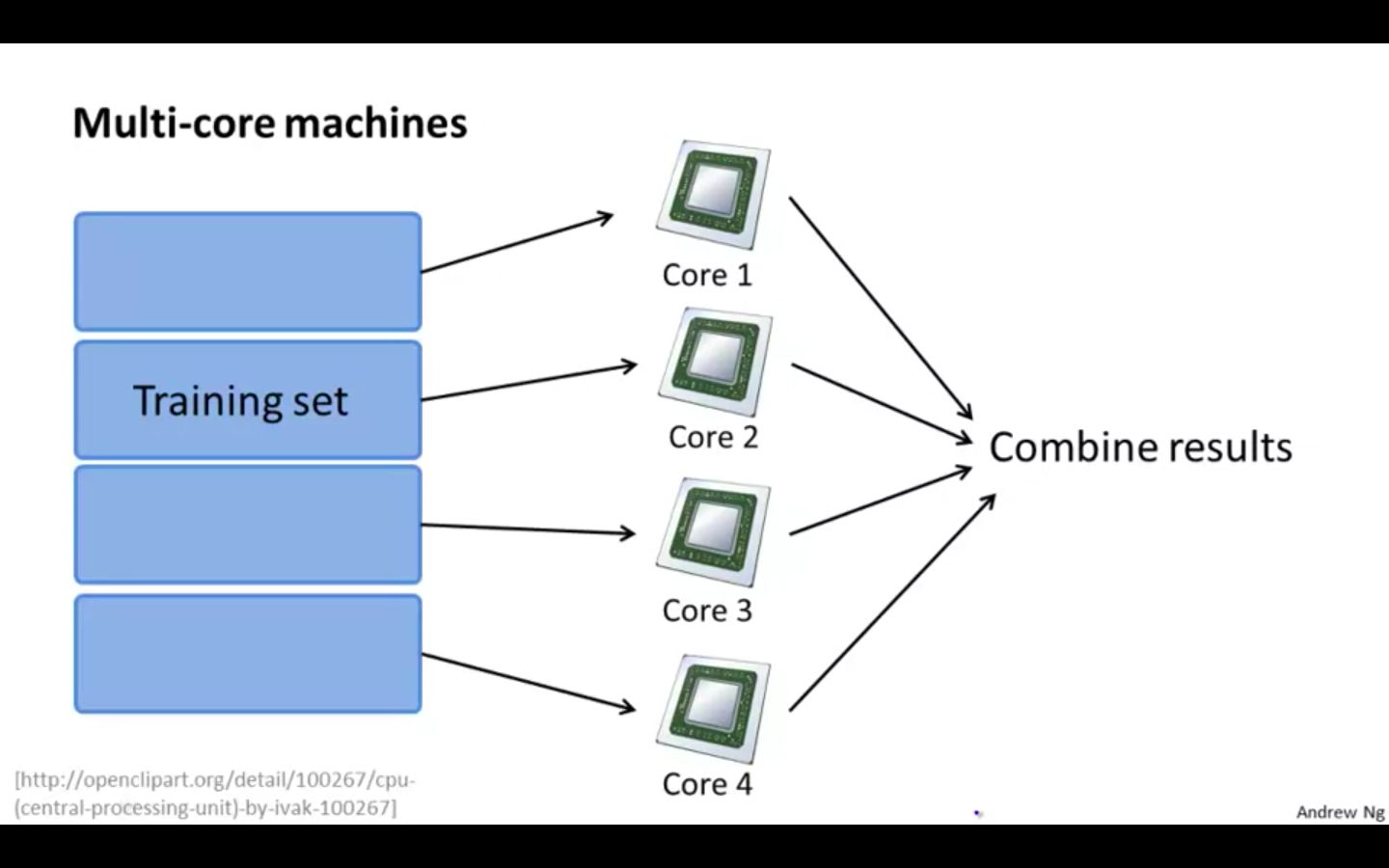
-
-